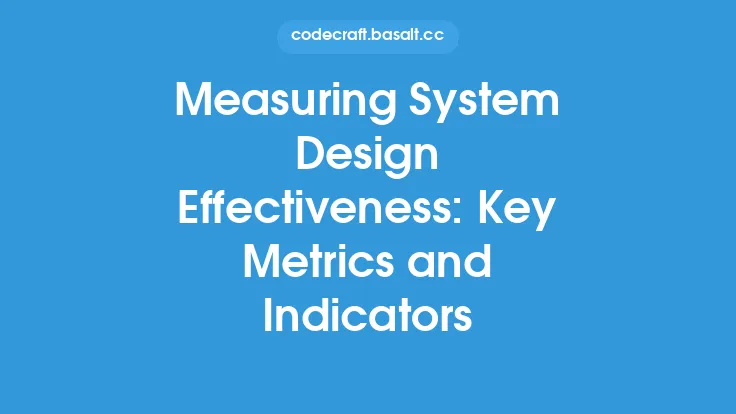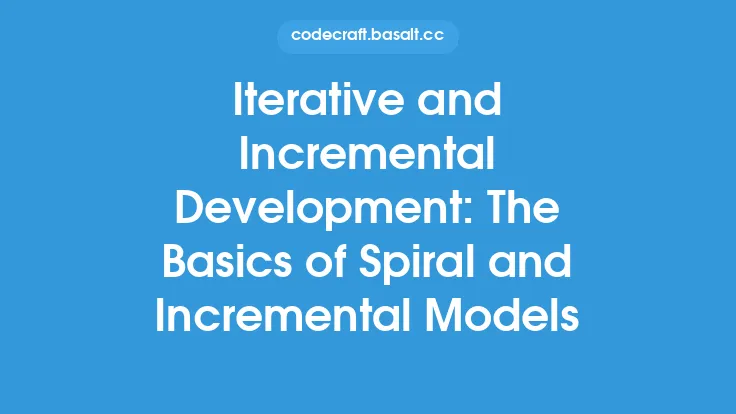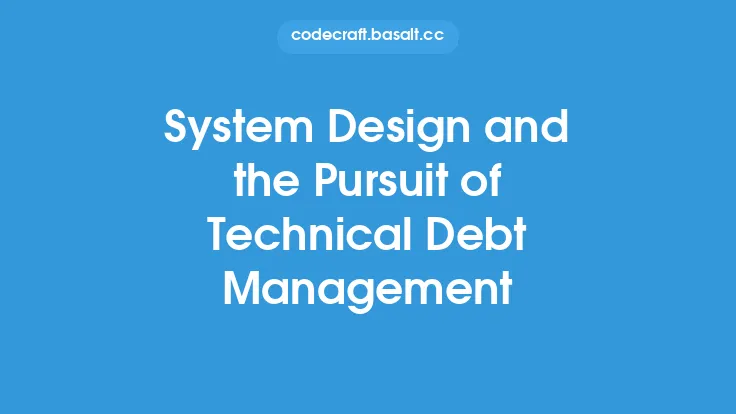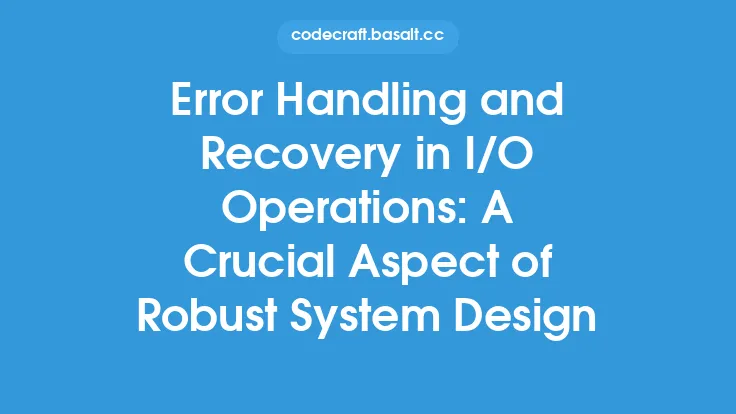System design is often viewed as a one-time effort, where architects and designers create a comprehensive plan for a system, and then it's implemented and forgotten. However, this approach can lead to systems that become outdated, inflexible, and unable to adapt to changing requirements. In reality, system design should be a continuous process that involves iteration and refinement. This approach allows systems to evolve and improve over time, ensuring they remain relevant, efficient, and effective.
Introduction to Continuous System Design
Continuous system design is an iterative process that involves ongoing evaluation, refinement, and improvement of a system's architecture and design. It recognizes that systems are not static entities, but rather dynamic and evolving constructs that must adapt to changing requirements, technologies, and user needs. By embracing iteration and refinement, system designers can create systems that are more resilient, scalable, and maintainable. This approach also enables organizations to respond quickly to changing market conditions, customer needs, and technological advancements.
Key Principles of Continuous System Design
Several key principles underlie the concept of continuous system design. These include:
- Embracing change: Recognizing that change is inevitable and that systems must be designed to adapt to new requirements and technologies.
- Iterative design: Breaking down the design process into smaller, manageable iterations that allow for continuous refinement and improvement.
- Feedback loops: Establishing feedback mechanisms that provide insights into system performance, user experience, and areas for improvement.
- Collaboration: Fostering a culture of collaboration among stakeholders, including designers, developers, operators, and users, to ensure that everyone is aligned and working towards common goals.
- Experimentation: Encouraging experimentation and testing of new ideas, technologies, and design approaches to drive innovation and improvement.
Benefits of Continuous System Design
The benefits of continuous system design are numerous. Some of the most significant advantages include:
- Improved adaptability: Systems that are designed to evolve and adapt to changing requirements are better equipped to handle uncertainty and unexpected events.
- Increased agility: Continuous system design enables organizations to respond quickly to changing market conditions, customer needs, and technological advancements.
- Enhanced resilience: Systems that are designed with iteration and refinement in mind are more resilient and better able to withstand failures, errors, and unexpected events.
- Better user experience: Continuous system design allows for ongoing evaluation and refinement of the user experience, ensuring that systems meet the evolving needs of users.
- Reduced technical debt: By continuously evaluating and refining system design, organizations can reduce technical debt and minimize the need for costly rework or redesign.
Tools and Techniques for Continuous System Design
Several tools and techniques can support continuous system design. These include:
- Agile methodologies: Agile approaches, such as Scrum and Kanban, emphasize iteration, collaboration, and continuous improvement.
- DevOps practices: DevOps practices, such as continuous integration and continuous delivery, enable rapid and reliable deployment of changes to systems.
- Cloud-native architectures: Cloud-native architectures, such as microservices and serverless computing, provide the flexibility and scalability needed to support continuous system design.
- Monitoring and analytics: Monitoring and analytics tools provide insights into system performance, user experience, and areas for improvement.
- Design thinking: Design thinking approaches, such as human-centered design and service design, emphasize empathy, experimentation, and continuous iteration.
Challenges and Limitations of Continuous System Design
While continuous system design offers many benefits, it also presents several challenges and limitations. These include:
- Cultural and organizational barriers: Continuous system design requires a cultural and organizational shift towards iteration, experimentation, and continuous improvement.
- Technical debt: Existing technical debt can make it difficult to adopt continuous system design, as it may require significant rework or redesign.
- Complexity: Continuous system design can add complexity to systems, particularly if not managed carefully.
- Resource constraints: Continuous system design requires ongoing investment in resources, including time, money, and personnel.
- Measuring success: It can be challenging to measure the success of continuous system design, as it requires ongoing evaluation and refinement.
Best Practices for Implementing Continuous System Design
To implement continuous system design effectively, organizations should follow several best practices. These include:
- Start small: Begin with a small, focused effort to test and refine the approach.
- Establish clear goals and objectives: Define clear goals and objectives for the continuous system design effort.
- Foster a culture of collaboration: Encourage collaboration among stakeholders, including designers, developers, operators, and users.
- Emphasize experimentation and learning: Encourage experimentation and learning, and provide the necessary resources and support.
- Monitor and evaluate progress: Establish metrics and indicators to monitor and evaluate progress, and make adjustments as needed.
Conclusion
Continuous system design is a critical approach for creating systems that are adaptable, resilient, and effective. By embracing iteration and refinement, organizations can create systems that evolve and improve over time, ensuring they remain relevant, efficient, and effective. While there are challenges and limitations to continuous system design, the benefits far outweigh the costs. By following best practices and leveraging tools and techniques, such as agile methodologies, DevOps practices, and design thinking, organizations can implement continuous system design and achieve significant improvements in system performance, user experience, and overall success.





